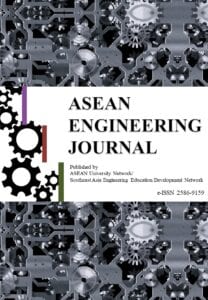EVALUATION OF TSUNAMI EVACUATION ROUTES AT BENGKULU CITY INDONESIA USING NUMERICAL SIMULATIONS
DOI:
https://doi.org/10.11113/aej.v3.15522Abstract
Tsunami may attack Bengkulu City at any time. Although the City has prepared evacuation shelters and signboards at strategic locations to direct people to the shelters, the roads from the tsunami prone inundation areas that lead to the shelters should be evaluated to assure their reliability. A numerical simulation based on multi agents was used to study the routes’ capacity for evacuation during tsunami hazard. The approximated time available starting from the earthquake was 20 minutes. The first five minutes up to ten minutes were considered as the time for the government to state whether an evacuation was necessary or for the people to get ready for the evacuation. Five scenarios were tested. These were normal condition where the people were assumed to follow the existing evacuation sign boards, normal condition but with alternative direction of evacuation, a condition with obstacle during peak hour at a market, evacuation during night time, and a normal condition with increasing population. The simulation indicated that under normal condition, most of the people reached the shelter in less than 20 minutes. The alternative evacuation direction performs slightly better. The obstacles due to cars that were parked along the roads slightly increased the number of casualties. Evacuation scenario during the night time increased the casualties due to the limited vision especially along the lanes. The evacuation route should be well prepared especially during tsunami event in the future.
















